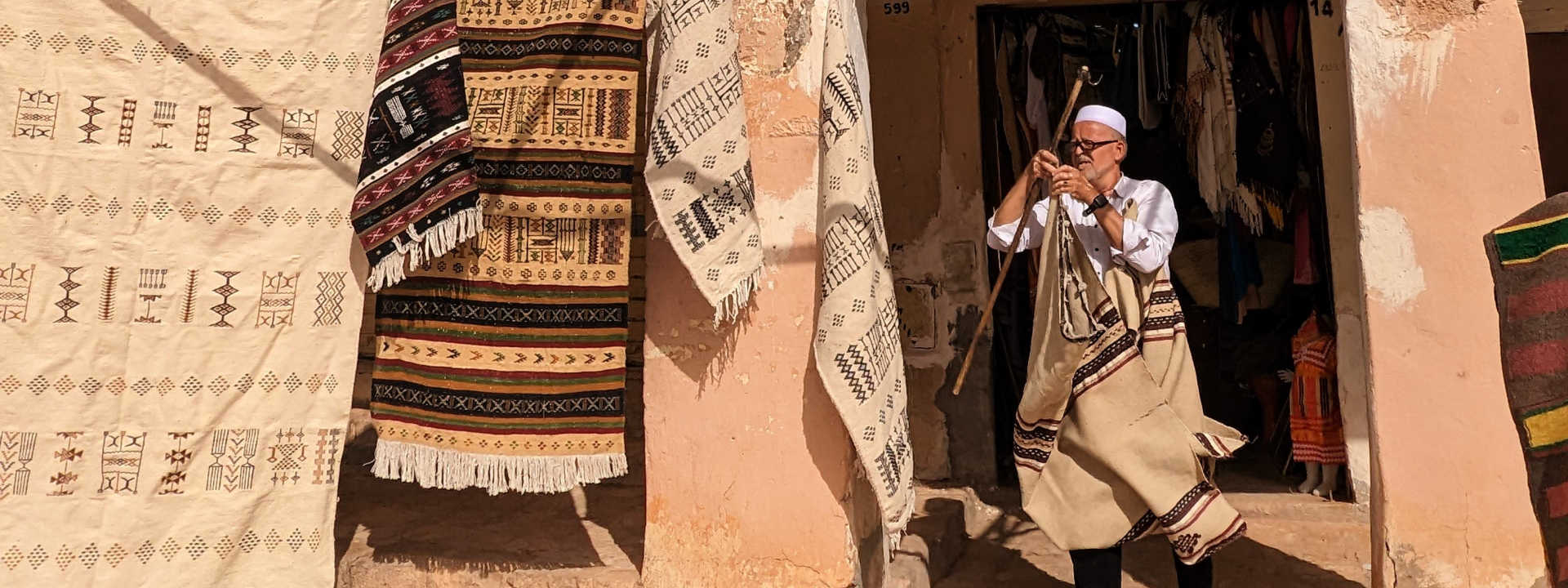
Is Algeria the most exciting country in North Africa? Thanks to a recent surge in bookings to the country, it seems that more of you agree, and who are we to argue? Stretching from the Mediterranean in the north, to the Sahara in its interior, this vast country is Africa’s largest and, arguably, its most diverse in terms of landscapes and people.
Our sales consultant Michaela has just returned from our 15-day Algeria Odyssey adventure. Here, in her pictorial Algeria travel guide, she takes us on an adventure from the casbah of Algiers to Saharan oases via the Roman ruins of Timgad and Cherchell, the Andalucian architecture of Tlemcen and the towns of the M’Zab Valley.
As well as a journey through landscapes and history, she also meets local people en route.
Roman ruins at Lambese
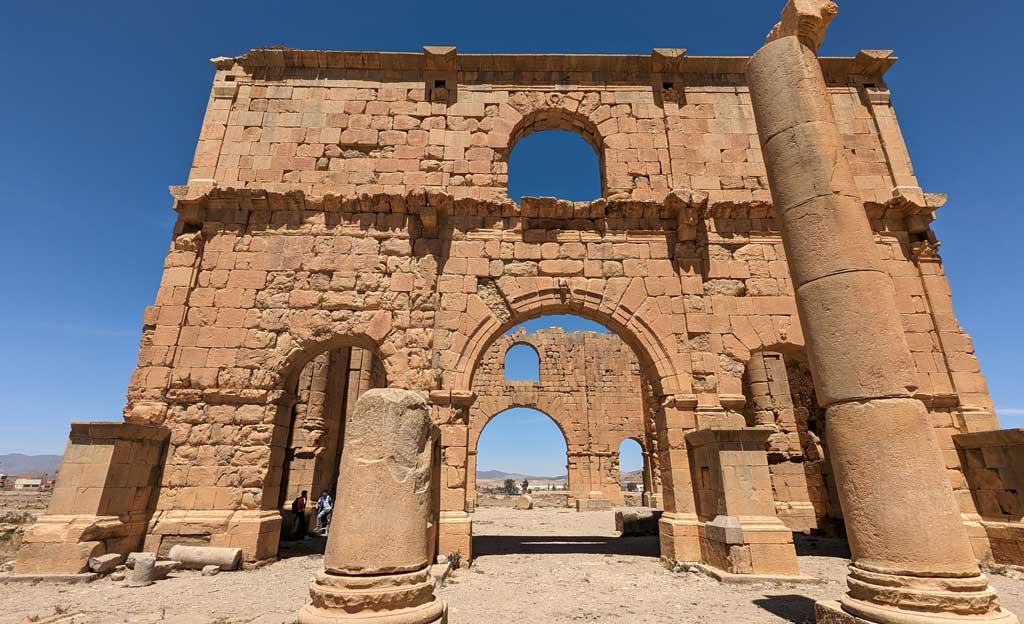
Northern Algeria is full of well-preserved and extensive remains to rival those found in Rome. The site pictured here is smaller than the better-known Algerian sites of Timgad and Djemila, but impressive nonetheless and well worth a visit. Here you can see the triumphal arch and it’s also possible to find the remains of temples, an aqueduct, amphitheatre, baths and private houses.
Rhoufi, Aures Mountains
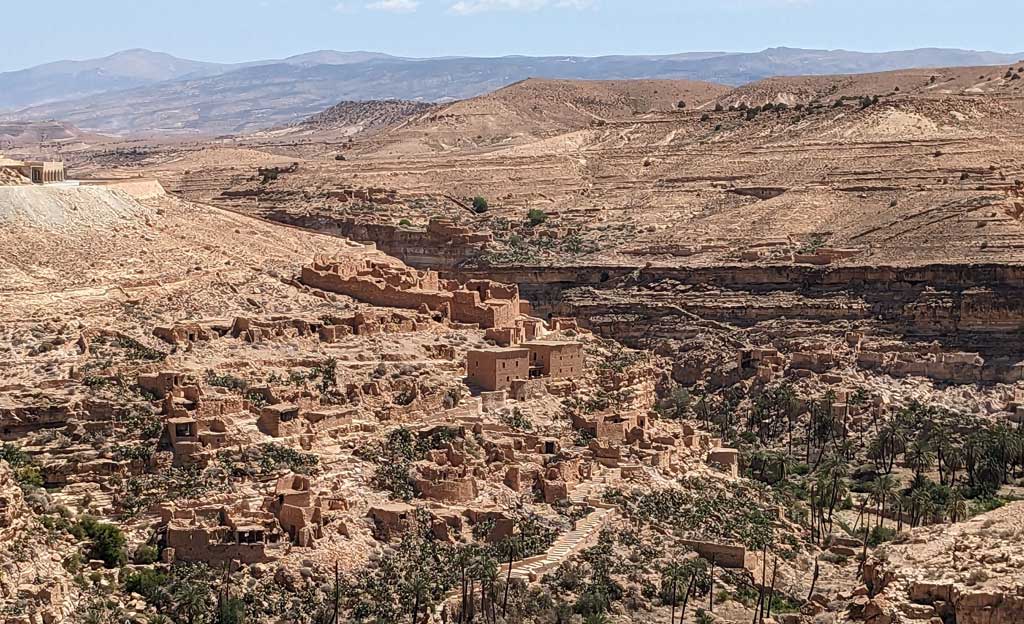
The historic settlement of Rhoufi in the Aures Mountains, not far from the location from which the first shots of the Algerian rebellion were fired in 1954. Small villages of traditional Berber houses made from the surrounding stone cling to the cliffsides but are sadly now abandoned as people move towards more modern lifestyles and the river that once flowed through has dried up. The scenery here is fantastic with the canyon winding through the mountains, descending into the palm groves below.
El Atteuf, M’Zab Valley
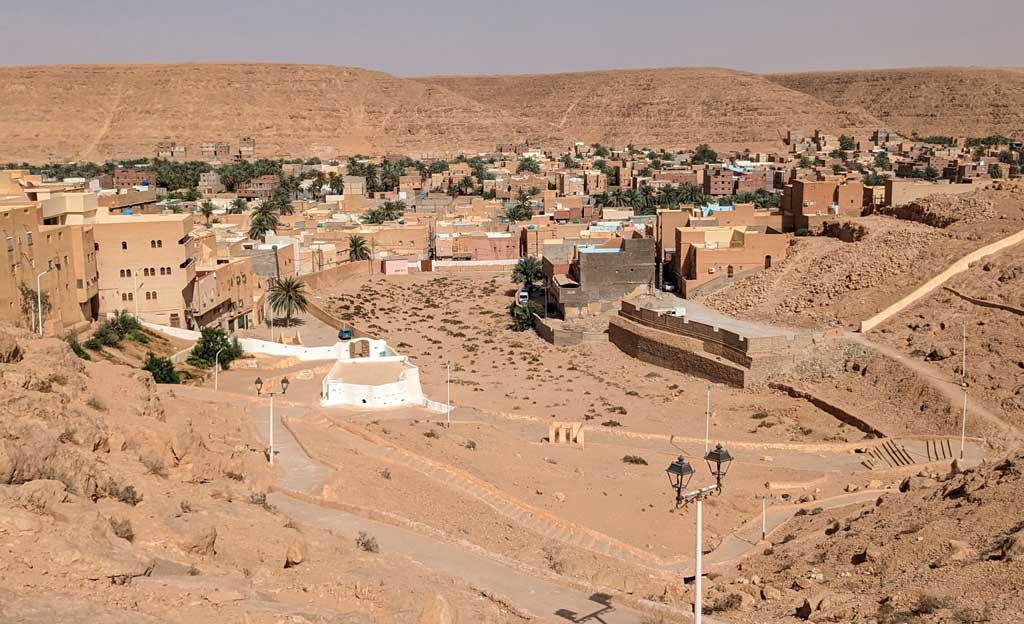
The Saharan town of El Atteuf in the M’Zab Valley – the oldest of the five towns in the valley, however the largest, Ghardaia is best known. The houses here are built around a central mosque and have narrow, twisted streets which aren’t wide enough to accommodate cars, so donkeys are still used to transport goods through the streets. Life is very traditional here and the modern world has had very little influence. People rely heavily on the ‘foggara’ irrigation systems which are used to grow palm trees, producing some of the country’s best dates. The whitewashed mosque of Sheikh Sidi Brahim (pictured) is over 700 years old and is said to have provided inspiration for Le Corbusier who went on to use the design in Paris.
Ghardaia
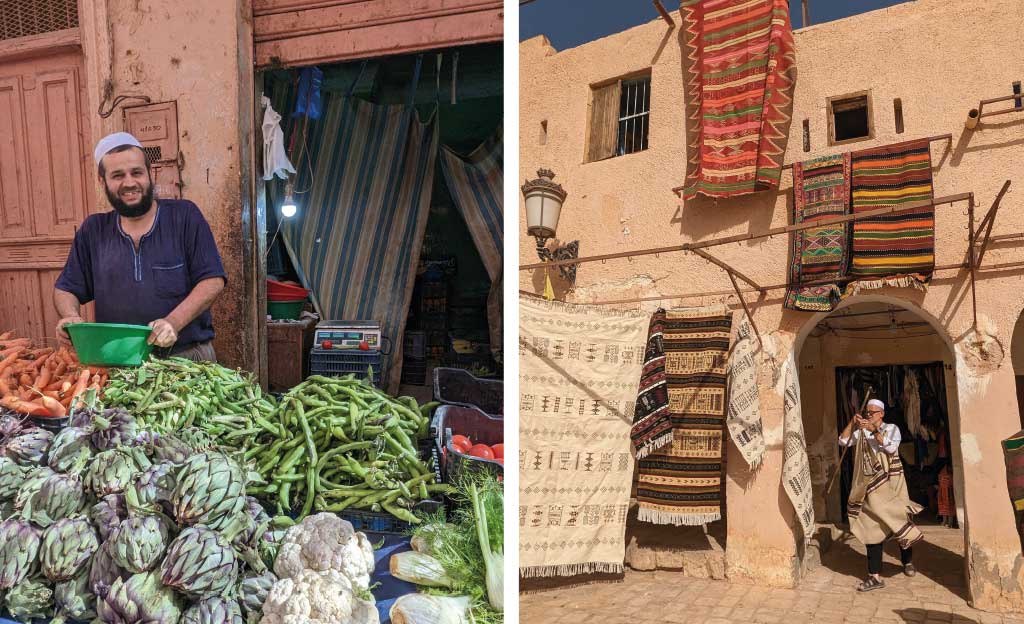
Pictured here are some local men at the market square in Ghardaia, one selling fresh vegetables and the other traditional handwoven rugs, a craft that the town is famous for. These are made from goat hair and usually feature a geometric pattern.
Constantine
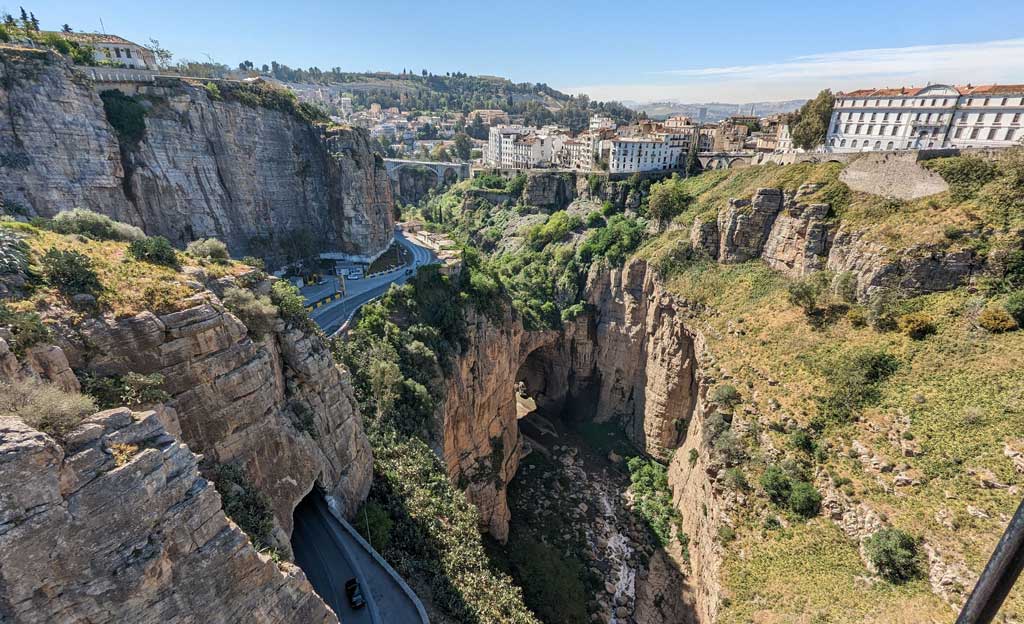
The city of Constantine is one of the world’s oldest cities and is named after the Roman Emperor who rebuilt it in the 4th century. The numerous bridges that cross the deep Rhumel Gorge and connect the city are one of its main attractions, along with the Palace of Ahmed Bey and the Casbah with its winding atmospheric streets.
Tidjania mosque, Tamelhat
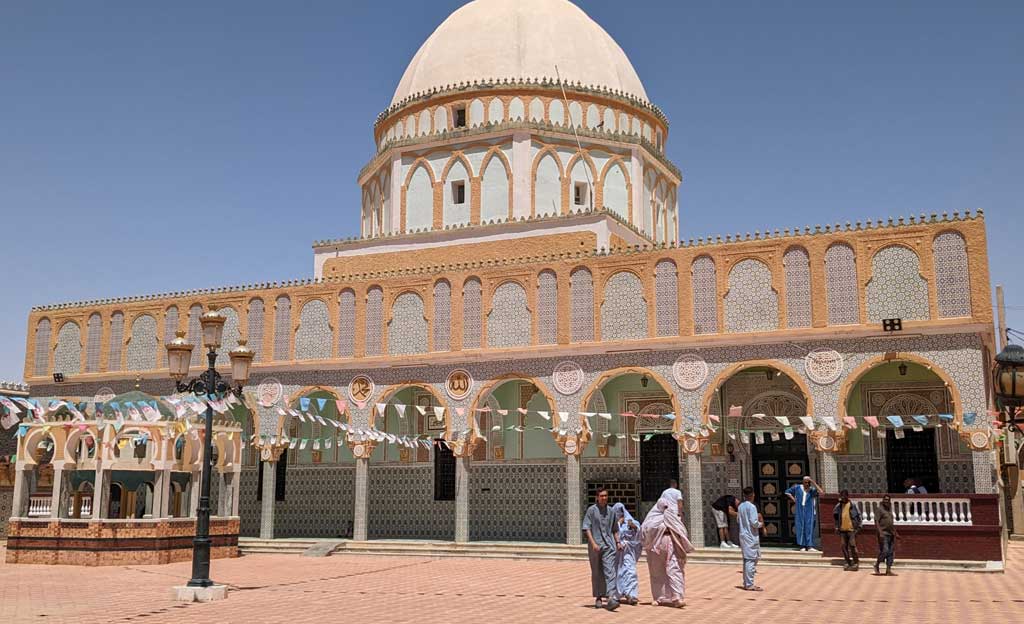
The mosque of Tidjania in Tamelhat, East Sahara. We made a stop here on our way down to Ghardaia and it was a real highlight of the tour.
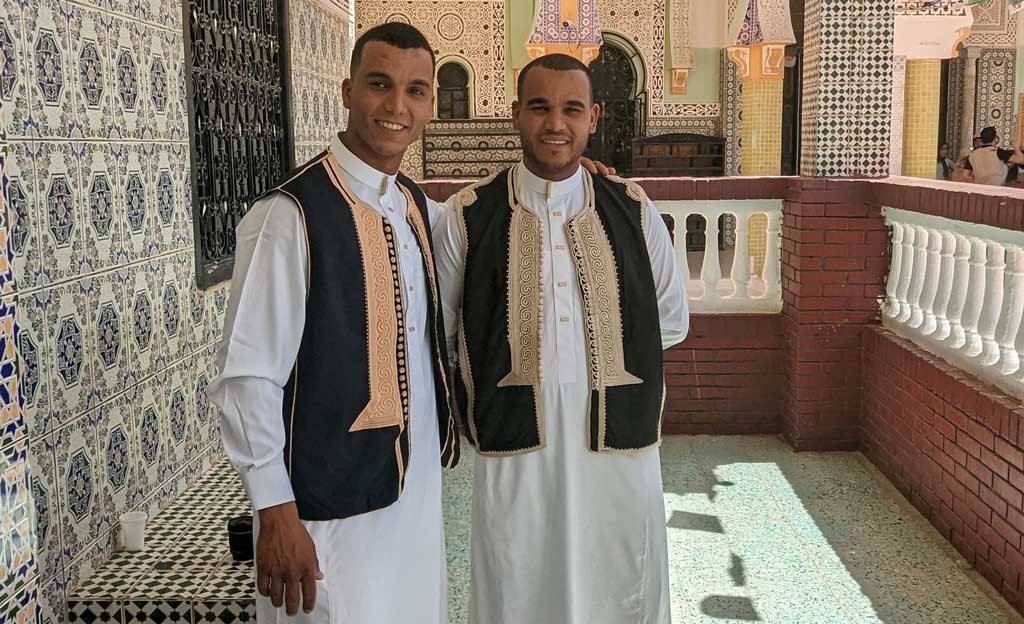
We were fortunate to meet a couple and their families preparing for a wedding, wearing traditional dress, as well as a group of school children who were very keen to have their photos taken with us and practice their English. The mosque dates from the 13th century and is beautifully decorated with brightly coloured tiles.
Between Constantine and Tiddis
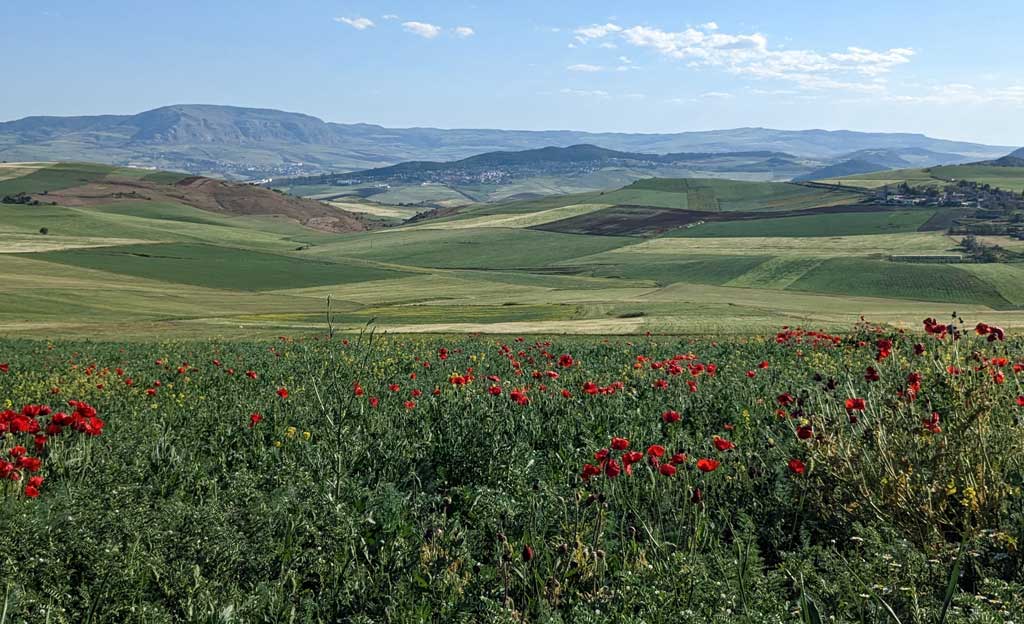
The green hilly countryside between Constantine and the Roman ruins of Tiddis. This was quite a contrast to the drier landscapes that we saw elsewhere in the country. Spring is a really nice time to visit when the wildflowers are in bloom, like the red poppies seen here.
M’Chouneche
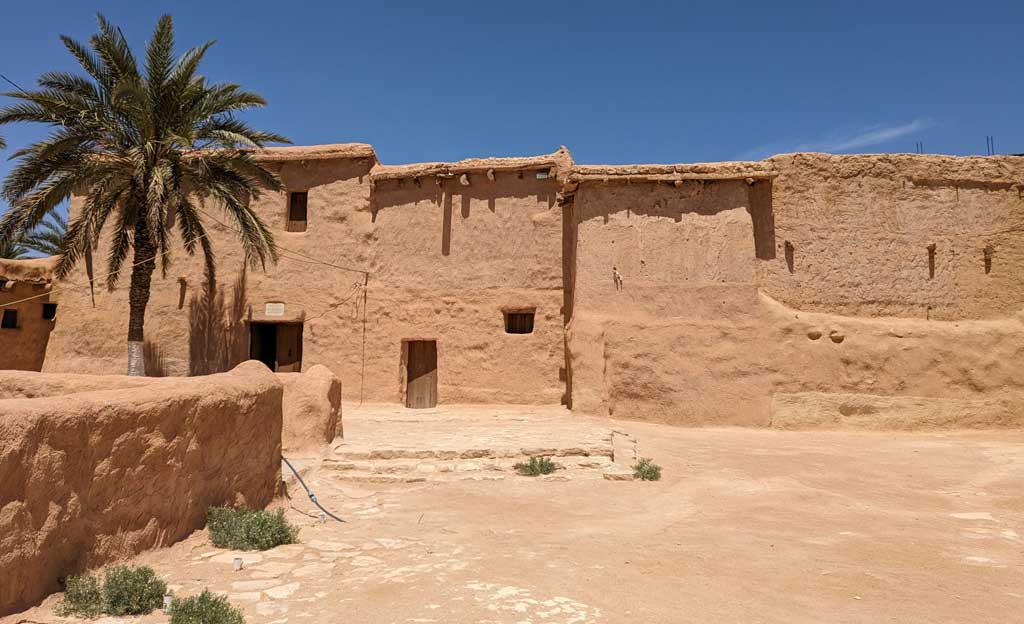
The family home of Colonel Si El Haoues in M’Chouneche, not far from Biskra and the last Berber village in the Aures Mountains before entering the Sahara. The colonel played an instrumental role during the rebellion against the French and was highly respected. The house was transformed into a museum by the colonel’s sons in his memory and is a great example of typical local architecture, made out of mud brick and incorporating the trunks of palm trees for roof support. The thick walls are designed to keep the house cool during the summer, but warm during winter, and the inside is a showcase of traditional local life in the region.
Medracen
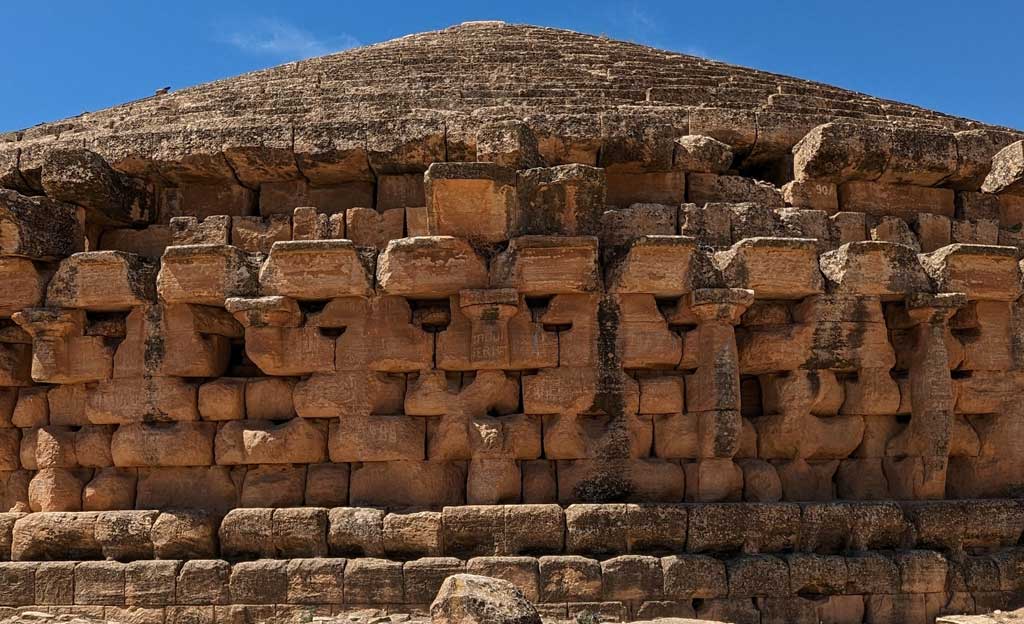
The mausoleum of Medracen, not far from Batna in northeastern Algeria. This archaeological site dates back to the 4th century BC and is believed to be the burial place of a Berber Numidian king, although no bodies have yet been found. The structure is the largest pre-Roman building in North Africa, as well as the oldest Numidian building still standing, and is very similar to the Tomb of the Christian in Tipasa. The tomb is constructed from huge stone blocks and decorated with columns, with a false door and hidden entrance which leads to the burial chamber.
Roman Tiddis
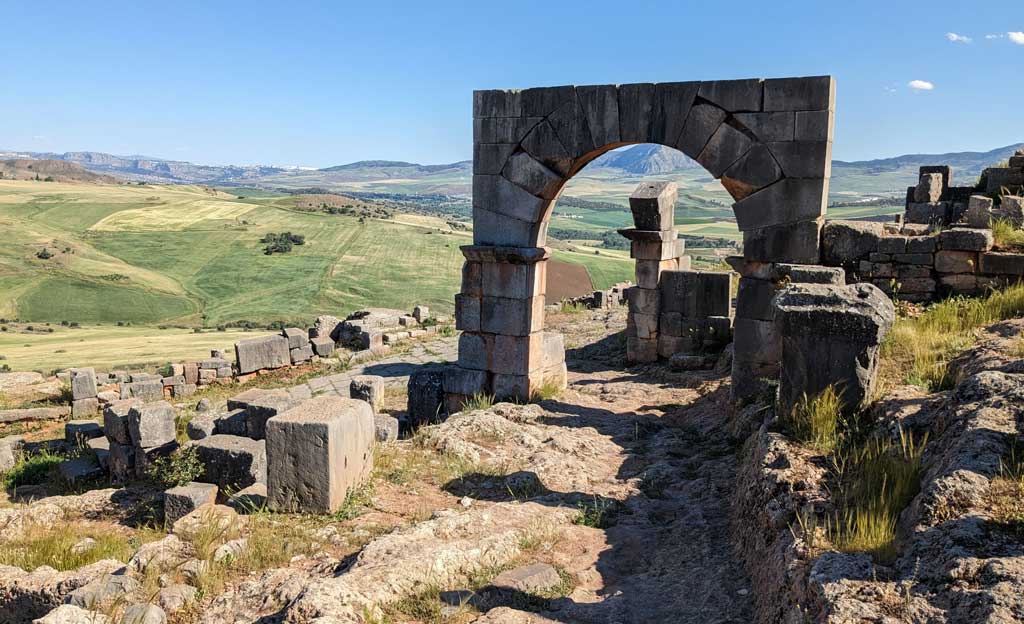
A short drive from Constantine is the small Roman site of Tiddis, perched on a hillside with cliffs on three sides, providing a natural defence system. The town is quite unique in that each house had its own water supply, unlike many of the other Roman sites in Algeria, and has houses built into the rock. Several troglodyte caves can also be found here which were used by the Berbers before them.
Algiers, Grande Posts
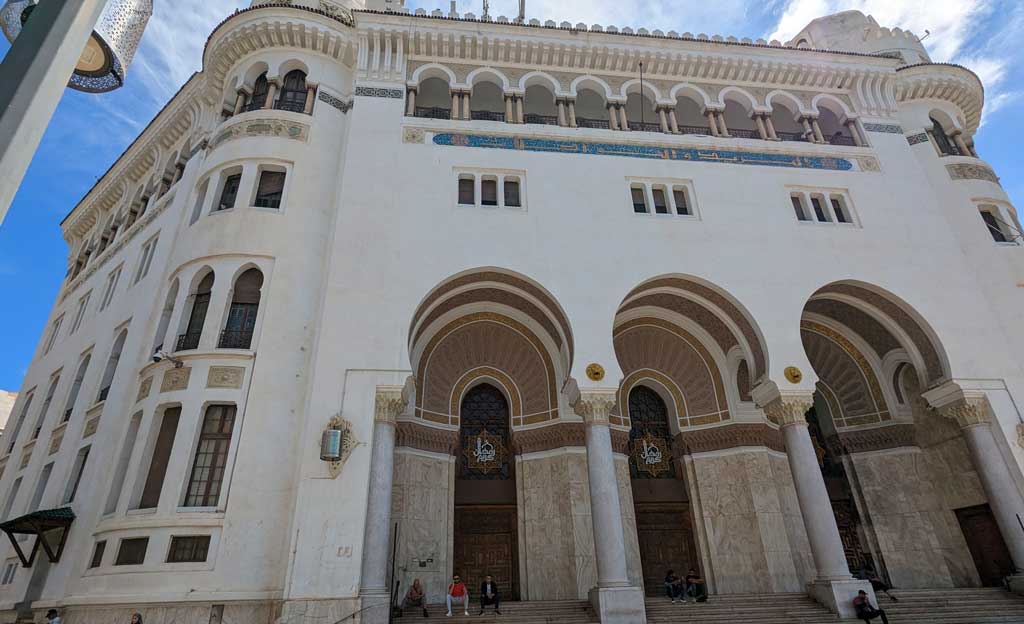
Built in 1913 and designed in neo-Moorish style by architects Voinot and Toudoire, this huge whitewashed building is Algiers’ postal headquarters and one of the city’s most impressive structures. The interior is beautifully decorated in Islamic style and more akin to a mosque than a post office.
More about travel in Algeria
Want to know more about Algeria? Take a look at our Seven Reasons to Visit Algeria blog as well as our Algeria holidays section. The trip taken by Native Eye’s Michaela was our Algeria Odyssey tour, a fantastic introduction to the country’s highlights. For an alternative Algeria adventure, our 13-day Algeria – Jewel of the Sahara focuses on the south of the country with its weird and wonderful desert landscapes.
Alternatively, get in touch with us via our Contact Us page. We’d love to hear from you!
Other blog posts you may like
Mauritania Travel Guide
Visit Syria – Go now!
Best Middle East tours
Jim O’Brien’s Photos of Oman
Seven Reasons Why you Should Visit Algeria
Best Places to Visit in Saudi Arabia
20 Best World Heritage Sites
Native Eye’s Best Small Group Tours
Recent Posts
- Why visit Romania – Highlights and Must-See Attractions
- Best Cultural Festivals in Africa for Intrepid Travellers
- Unusual Holidays in Europe – Alternative trips for adventurous travellers
- Guide to Mauritania Travel – Where, Why and How
- Saudi Arabia Attractions: Reasons to explore this country of contrasts and change


